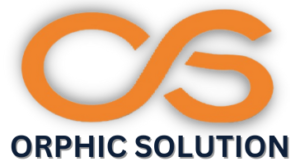Industry News and Trends
Navigating the World of Programmatic Advertising: Tips for Effective Campaigns

Programmatic advertising . In the ever-evolving landscape of digital advertising, programmatic advertising has emerged as a powerful tool for reaching target audiences with precision and efficiency. Its automated approach to buying and selling ad inventory in real-time, fueled by data and algorithms, has revolutionized the way advertisers connect with consumers across various channels. However, navigating the world of requires a strategic approach and a deep understanding of its intricacies to ensure effective campaigns that drive results. In this comprehensive guide, we’ll delve into the fundamentals of programmatic and provide actionable tips for running successful campaigns.
Understanding Programmatic Advertising

advertising involves the automated buying and selling of ad inventory through technology platforms, often in real-time auctions. This automated process replaces traditional manual methods, enabling advertisers to target specific audience segments with precision and efficiency. advertising encompasses various channels, including display, video, mobile, social media, and connected TV, allowing advertisers to reach consumers across multiple touchpoints.
Tips for Effective Programmatic Advertising Campaigns
1. Define Clear Campaign Objectives
Before launching a programmatic campaign, it’s essential to define clear objectives that align with your overall marketing goals. Whether your goal is to drive brand awareness, generate leads, increase sales, or promote a specific product or service, having clear objectives will guide your campaign strategy and help measure success.
2. Know Your Audience
Audience targeting is a cornerstone of programmatic . Utilize audience data and insights to understand your target audience’s demographics, interests, behaviors, and preferences. Segment your audience based on relevant criteria to deliver personalized and relevant ad experiences that resonate with your audience.
3. Utilize Data and Analytics
Data and analytics play a crucial role in optimizing programmatic campaigns. Monitor key performance indicators (KPIs) such as impressions, clicks, conversions, and cost per acquisition (CPA) to gauge campaign performance. Leverage data insights to identify trends, patterns, and opportunities for optimization.
4. Implement Brand Safety Measures
Maintaining brand safety is paramount in programmatic advertising to protect your brand’s reputation and integrity. Implement measures to ensure that your ads appear in brand-safe environments and avoid association with harmful or inappropriate content. Utilize tools and technologies to monitor ad placements and blacklist sites that pose a risk to your brand.
5. Optimize for Mobile
With the increasing prevalence of mobile devices, optimizing your programmatic campaigns for mobile users is essential. Ensure that your ad creatives are mobile-responsive and provide a seamless experience across devices. Utilize mobile-specific targeting options to reach users on their smartphones and tablets effectively.
6. Test and Iterate
Continuous testing and iteration are key to optimizing programmatic advertising campaigns. Test different ad creatives, messaging, targeting options, and bidding strategies to identify what resonates best with your audience. Analyze the results of your tests and iterate on your campaigns to optimize performance and drive better results over time.
7. Work with Experienced Partners
If you’re new to programmatic advertising or lack the resources to manage campaigns in-house, consider working with experienced partners such as agencies, ad tech platforms, or managed service providers. These partners can provide expertise, technology, and support to help you navigate the complexities of programmatic and achieve your campaign objectives.
Conclusion
In conclusion, programmatic offers tremendous opportunities for advertisers to reach their target audiences with precision and efficiency. By defining clear objectives, knowing your audience, utilizing data and analytics, implementing brand safety measures, optimizing for mobile, testing and iterating, and working with experienced partners, you can navigate the world of programmatic effectively and run successful campaigns that drive results.
Get Access Now: Orphic Solutions
Blog
7 Proven Techniques of the Best Digital Marketing Company in Bhopal

Today, there is no question that digital marketing is not a choice but rather a must. Whether you run a small local shop or a big national company, your online presence is crucial.
The top digital marketing agencies in Bhopal apply a combination of tactics including seo, social media marketing, web development and paid advertising in order to greatly grow your business.
In this post, we highlight 7 key strategies top digital agencies implement to drive traffic, gain leads and sales for local businesses in Bhopal.

Importance of Digital Marketing for in Bhopal Businesses
Bhopal is an evolving market and it’s completely dependent on internet surfing to let people make purchases. Whether it’s restaurant meals or real estate, customers go online for information before making purchases.
A good marketing agency in Bhopal can assist your business:
SEO and Social Media Optimization for more online visibility
Generate leads with targeted PPC ads Create qualified leads through PPC ads that are targeted to promote your firm for the services important to business owners.
Establish trust and authority through epic content
Personalize campaigns for a local market, so that your marketing is more relevant
Example:
A local restaurant making smart choices online can rank in “near me” searches, drive foot traffic and ramp up its online orders thanks to Google and Instagram ads.
Develop an Effective Digital Marketing Strategy
Every winning campaign begins with a detailed, actionable plan.
Your strategy should include:
Market research and competitor analysis
Knowing your audience and their needs
Selecting appropriate marketing channels (SEO, social media, PPC, etc.
Establishing Goals and KPIs to define success
Pro Tip:
Begin with organic marketing including SEO and social media. When you get the ball rolling, invest in some PPC advertising for quicker results.
Smart SEO with Latest Updates
SEO is the lifeblood of digital expansion. One of the best SEO companies in Bhopal has been working on following three factors.
On-page SEO: It relates to all factors on your own website which can be optimised for search engines like google, including content, meta tags and internal hyperlink building.
Off-page SEO: Generating quality backlinks and citations for local business
Technical SEO: Increasing speed, mobile responsiveness and site structure.
The ability of your site to evolve and avoid getting penalised is determined by its keep-it-fresh score, not the arbitrary date you published it.
Example Keyword Use:
“Our team stays up to date with the most recent SEO changes to help our clients rank and maintain their rankings over time.”
High-Performing Website Design & Development
Your website is essentially your digital shop front. Slow or poorly designed, potential customers will go elsewhere.
What A web design company in Bhopal does?
Mobile-friendly, responsive designs
Pages load in less than 3 seconds
SEO-friendly structure and clean coding
Clean and tidy navigation with strong CTA buttons
A web development company in Bhopal, on the other hand, makes sure your website is secure and scalable along with incorporated analytics to track well.
Internal Linking Tip:
Link this to your web development service page for stronger SEO.
Social Media Marketing That Engages
Social media isn’t just about posting images-it’s also a place to connect with your audience.
An effective social media marketing strategy consists of:
Interactive material such as reels, videos and infographics
Consistent posting schedules
Utilize local hashtags and trending topics.
Creating paid advertisements for targeted exposure
Example:
A Bhopal-based apparel brand saw sales take a 45% jump after posting Instagram ads and tied up with local influencers.
Focused PPC Campaigns for Immediate Effects
PPC advertising is all about getting immediate exposure and instant results when done right.
The top agencies use to advertise by PPC:
Google Ads for search-driven traffic
Facebook & Instagram Ads for local targeting
LinkedIn Ads for B2B businesses
Benefits of PPC:
Instant traffic and visibility
Better audience targeting
Easy tracking and measurable ROI
Internal Linking Tip:
For more details, link to your PPC service page.
Tactic 6 – Always Blog And Create Content Old but new, this takes people away.
Your content is what helps you build that trust and get established as an authority in your niche.
Top agencies focus on:
Blogs that highlight response to customer questions on a weekly basis
Local seo content for bhopal audiences. 2019 hsn code list city wise searchable pdf and excel file.
Educational resources to nurture leads
Example Blog Topics:
24 SEO Updates Every Business Owner Should Know
Why to Join Web Development Classes in Bhopal? Opportunities on Your Career”
Top Small Business Digital Marketing Trends
Follow Data to Analyze and Improve
Digital marketing is not a one-time job. You must monitor your progress and optimize incessantly.
You can do this through tools such as Google Analytics and Search Console:
Monitor traffic and conversions
Identify underperforming pages
Modify tactics according to the facts
Pro Tip:
Weekly review of analytics with small, steady changes.
FAQs
Q1. What would you need a digital marketing company in Bhopal?
Local agencies simply know the market, competition, how customers behave better and that gives you a definite edge.
Q2. How frequently should I be updating my SEO strategy?
No less than 4 times per year or after significant Google algorithm changes.
Q3. What is more effective: SEO or PPC?
SEO is for sustainable growth, PPC is providing instant results. A mix of both is ideal.
Q4. What are the best in digital marketing topics to study?
SEO, social, PPC, content and analytics.
Conclusion & Call to Action
Developing an effective internet presence is hard – it takes a lot of time, consistency and knowhow. With these seven strategies, your business can differentiate itself and grow at a faster pace than that of the competition.
Final Tip:
Collaborate with a reliable digital marketing agency in Bhopal to receive professional advice and measurable results.
Ready to grow your business?
Reach out to Orphic Solution now for a free SEO analysis and consultation.
Blog
Best SEO Company in Bhopal for 2025 – Complete Guide

Why SEO Matters More Than Ever in 2025
In 2025, digital presence isn’t just important—it’s essential. With more brands shifting online, businesses need a smart, sustainable way to stay visible in an ever-competitive space. That’s where SEO comes in. And if you’re looking to dominate local search and grow your business in central India, finding the best SEO company in Bhopal is the first step.
Whether you’re a startup, small business, or established brand, the right digital marketing company in Bhopal can boost your visibility, leads, and conversions significantly. So, what separates the good from the best? Let’s dive in.
What Makes a Digital Marketing Company in Bhopal Truly the Best?
A digital marketing company must go beyond basic keyword optimization. The best digital marketing companies in Bhopal offer full-service solutions—from content strategy to technical SEO, local SEO, paid ads, and social media marketing.
The best digital marketing company in Bhopal should provide:
- Transparent reporting
- Industry-standard tools
- ROI-driven campaigns
- Personalized strategies
When looking for a digital marketing agency in Bhopal, consider the ability to adapt to local and national trends. A true digital marketing agency will know your audience better than any outsourced team.
Orphic Solution – Bhopal’s Trusted SEO Partner for 2025
With over 8 years of experience, Orphic Solution is proud to be recognized as the best SEO company in Bhopal by dozens of satisfied clients. We don’t just rank websites—we grow businesses.
Here’s why Orphic stands out as the best SEO agency in Bhopal:
- Custom SEO & PPC strategies tailored for your business
- Dedicated SEO experts with real-time support
- Proven success with local and national clients
- Transparent monthly reporting
If you’re looking for Bhopal’s best SEO company, Orphic Solution is the name to trust.
Top SEO & Digital Marketing Trends in Bhopal (2025 Edition)
The SEO and digital marketing trends are evolving fast. In 2025, brands must adopt:
- AI-powered keyword research and content creation
- Voice search optimization
- Mobile-first and Core Web Vitals compliance
- Hyperlocal SEO targeting
- Quality backlinks from high DA sites
Businesses investing in digital marketing services that align with these trends will win.
Why Choose a Local SEO Company in Bhopal Like Orphic Solution?
Choosing a local SEO company in Bhopal gives you the upper hand. A local partner understands Bhopal’s market nuances, competition, and customer behavior.
Orphic Solution, a leading digital marketing agency in Bhopal, offers:
- Hands-on campaign management
- In-person consultations
- Tailored SEO strategies for Bhopal-based businesses
Whether you’re in retail, real estate, education, or healthcare, our digital marketing services will deliver measurable results.
Get Started with the Best SEO Company in Bhopal Today
Don’t let your competitors outrank you. Partner with Orphic Solution—the best digital marketing in Bhopal and your go-to SEO company in Bhopal—to increase visibility, grow traffic, and boost sales.
Ready to grow your business online? Contact Orphic Solution today for a free SEO consultation and let us help you dominate the search results.
Blog
Google’s New Algorithm Updates 2024: Impacts on Local SEO and Content Quality

In 2024, Google has rolled out several significant algorithm updates that are reshaping the landscape of local SEO and content quality. These changes are crucial for businesses to understand in order to stay competitive and maintain high search engine rankings. Let’s explore the impacts of these updates and the best strategies to adapt.
Understanding Google Algorithm Updates 2024

The Google algorithm updates 2024 have introduced several changes aimed at improving the quality and relevance of search results. These updates emphasize high-quality content, proximity-based SEO, and strict spam policies.
The Google Vicinity Update
One of the major changes in 2024 is the Google Vicinity update, which focuses on proximity-based SEO. This update prioritizes businesses that are geographically closer to the searcher, enhancing the relevance of local search results. For local businesses, this means optimizing their online presence to appear prominently in local searches.
Impacts on Local SEO Strategies
The Google Vicinity update significantly impacts local SEO strategies. Businesses need to focus on local search optimization to ensure they are visible to nearby customers. Here are some strategies to consider:
- Optimize Google My Business (GMB) Profiles: Ensure your GMB profile is complete with accurate business information, hours, and high-quality images.
- Local Keywords: Use location-specific keywords in your website content, meta descriptions, and titles to enhance local search visibility.
- Customer Reviews: Encourage satisfied customers to leave positive reviews on Google, as reviews are a critical factor in local rankings.
Enhancing Content Quality SEO
With the 2024 updates, Google places a stronger emphasis on high-quality content SEO. Content must be informative, well-written, and relevant to the user’s search intent. Here are some SEO best practices 2024 for content:
- In-depth Content: Create comprehensive content that thoroughly covers the topic. Avoid thin content that lacks substance.
- Originality: Ensure all content is original and not duplicated from other sources. Google rewards unique insights and perspectives.
- User Experience: Focus on user experience by making your website easy to navigate, mobile-friendly, and fast-loading.
Adapting to Google Core Update Effects
The Google core update effects are evident in how search rankings fluctuate based on content quality and relevance. To adapt, businesses should follow these SEO content guidelines:
- Regular Updates: Keep your content updated to reflect the latest information and trends.
- Engaging Media: Use images, videos, and infographics to make content more engaging and valuable to users.
- Author Expertise: Highlight the expertise and credentials of content authors to establish authority and trust.
Addressing Spam Policy Updates
Google’s updates in 2024 include stringent spam policy updates Google. These policies aim to reduce spammy and low-quality content. Here’s how to ensure your site complies:
- Avoid Keyword Stuffing: Use keywords naturally and avoid overstuffing them into your content.
- Link Quality: Focus on building high-quality backlinks from reputable sources rather than engaging in link schemes.
- Content Authenticity: Ensure all content is genuine and offers real value to users, avoiding tactics that might be perceived as manipulative.
Proactive Measures for Search Ranking Improvements
To achieve search ranking improvements, it’s essential to stay ahead of the curve with continuous optimization. Here are some proactive measures:
- Audit Regularly: Conduct regular SEO audits to identify and fix issues that may affect your rankings.
- Engage Users: Foster engagement through interactive content, social media integration, and responsive customer service.
- Monitor Competitors: Keep an eye on competitors’ strategies and adapt your own tactics to stay competitive.
Conclusion
The Google search algorithm changes in 2024 highlight the importance of high-quality content and local relevance. By focusing on content quality SEO, leveraging proximity-based SEO strategies, and adhering to updated SEO best practices 2024, businesses can navigate these changes effectively. Staying informed and proactive is key to maintaining strong search engine performance and achieving long-term success.
Implement these strategies and continuously adapt to the evolving SEO landscape to ensure your business remains visible and competitive in the ever-changing digital world.






